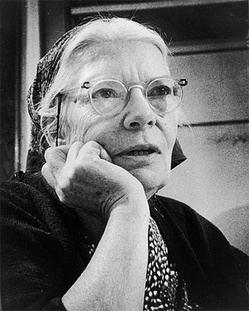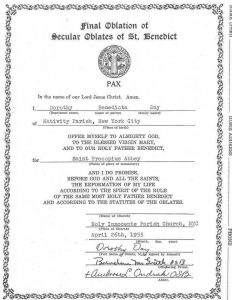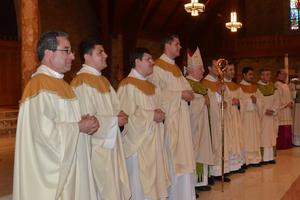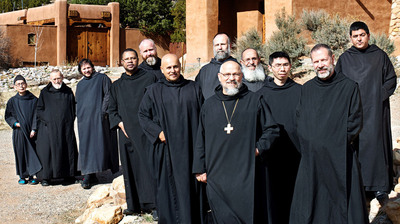Most people conceive of living the Benedictine charism –the Benedictine way of life given to us first by Saint Benedict in his Rule, and many centuries of living that Rule– as only being suited for life in monasteries. In history Benedictine monks and nuns have indeed been missionaries. Think of Augustine of Canterbury, Anselm, Boniface, Frowin, Conrad, Martin Marty and many more. Men and women following the promptings of the Holy Spirit and the needs of the Church have been called from the monastery to make new foundations, often they have moved from one culture to another sharing the gospel of Jesus Christ. You might say that they raised the bar in the way the Christian life is lived.
In the USA Benedictine life has great diversity: monks, nuns, sisters, and lay oblates; Benedictines with schools, retreat houses and farms; others with focussed contemplatives and others ready to do what is asked. We also have Cistercians of two observances, the Camaldolese and a growing population of laity who live the Rule in secularity. What is true, Benedictines evangelize culture and build society by their presence. Some monasteries having the members doing everything imaginable for one reason: that in all things God would be gloried. How else would you live your life if you truly believed in the Incarnation?
There is a group of Benedictine sisters whose vocation is to be missionary. Either they are sent as apostles to another place, or they are missionary in the place where they are. Since July 31, 1923, The Norfolk Priory of Missionary Benedictine Sisters have ministered here in the USA. The sisters bring the gift of St Benedict’s wisdom to the health care and education ministries, but there are engaged in Hispanic ministry, domestic service, ecumenism, environmental concerns, justice and peace issues, parish ministry, and religious education. Share the idea of following to women who want to serve the Lord in community, as a missionary, and in prayer and service of the neighbor.
Here is a video on the Norfolk Benedictine Sisters.
The Missionary Benedictine Sisters belong to serving Christ and the Church in various parts of the world.







 Oblation as a lay woman she was first connected with the Benedictine monks of Portsmouth Abbey before she settled her Oblation to St Procopius Abbey (outside Chicago). However, there is a difference of opinion on where Day’s Oblation was first offered, Portsmouth or Procopius. The historians have done some fact checking, so the matter is closed.
Oblation as a lay woman she was first connected with the Benedictine monks of Portsmouth Abbey before she settled her Oblation to St Procopius Abbey (outside Chicago). However, there is a difference of opinion on where Day’s Oblation was first offered, Portsmouth or Procopius. The historians have done some fact checking, so the matter is closed.



